Lucia Perez case: Latin America protests against gender violence
- Published
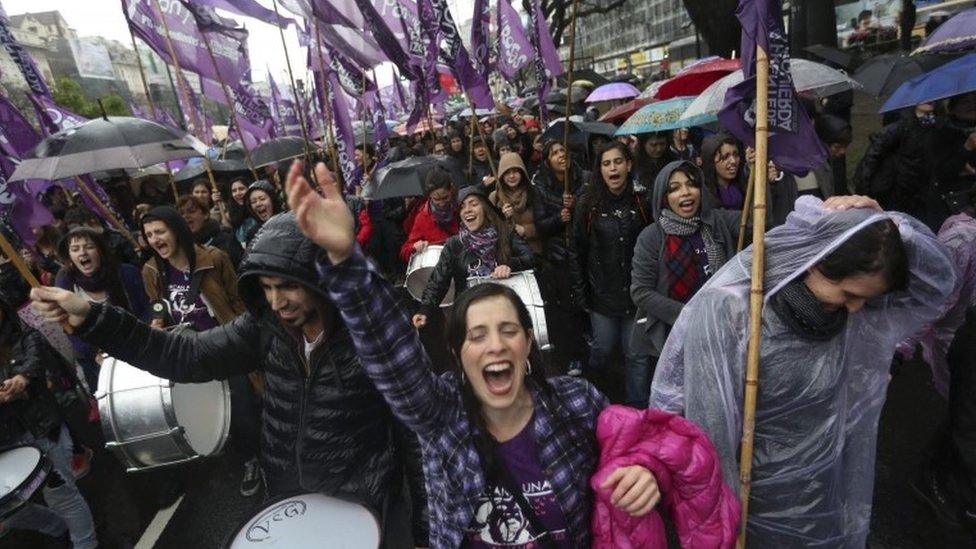
The biggest protests were in Argentina's capital, Buenos Aires, with marchers chanting the slogan "Ni Una Menos" (Not One Woman Less).
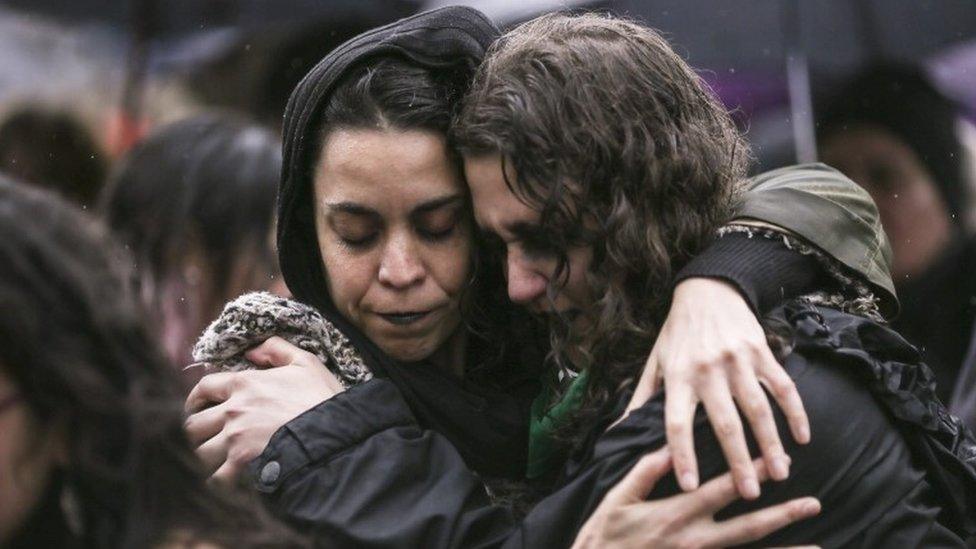
Demonstrators endured heavy rain to march from the iconic Obelisk in central Buenos Aires to the presidential palace at the Plaza de Mayo square.

Lucia Perez, 16, was drugged and raped before being killed in the city of Mar del Plata. Doctors found evidence she had been subjected to extreme sexual violence. Three men have been arrested in connection with the case.
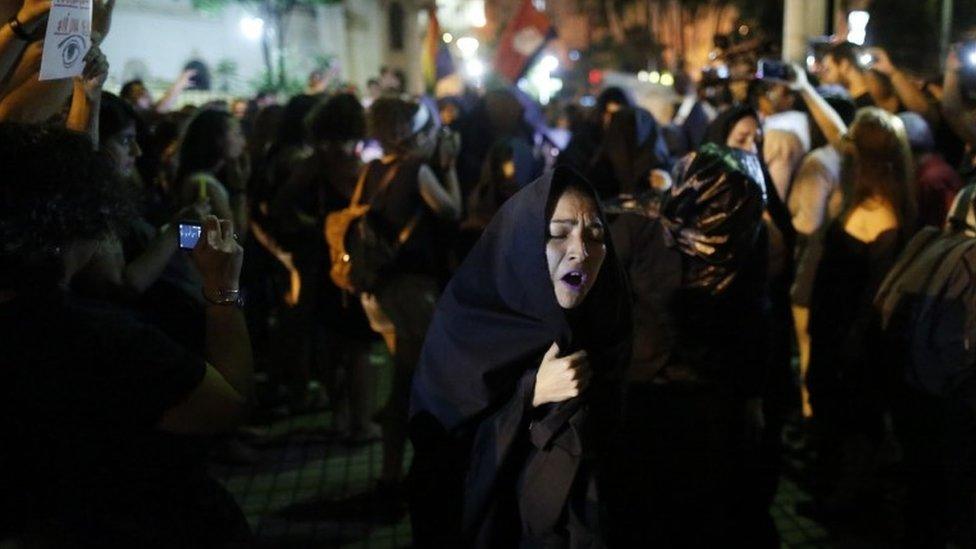
Protesters in the Paraguayan capital, Asuncion. Many wore black in mourning for the death of Lucia, and for others subjected to acts of sexual violence.
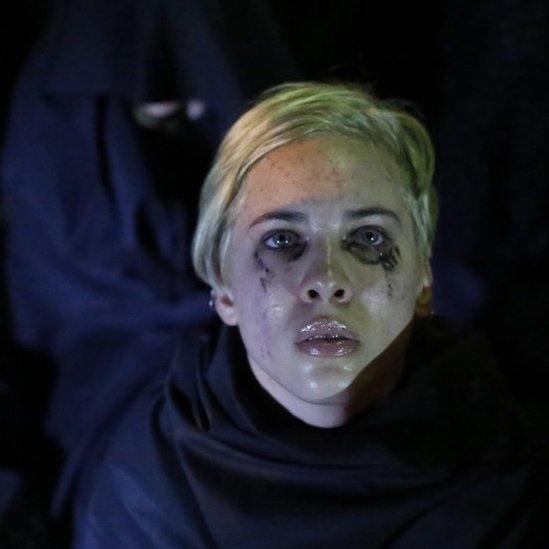
Campaigners say the concept of machismo, the Spanish word for an exaggerated form of masculinity, engenders attitudes that in their extreme form lead to men killing women.
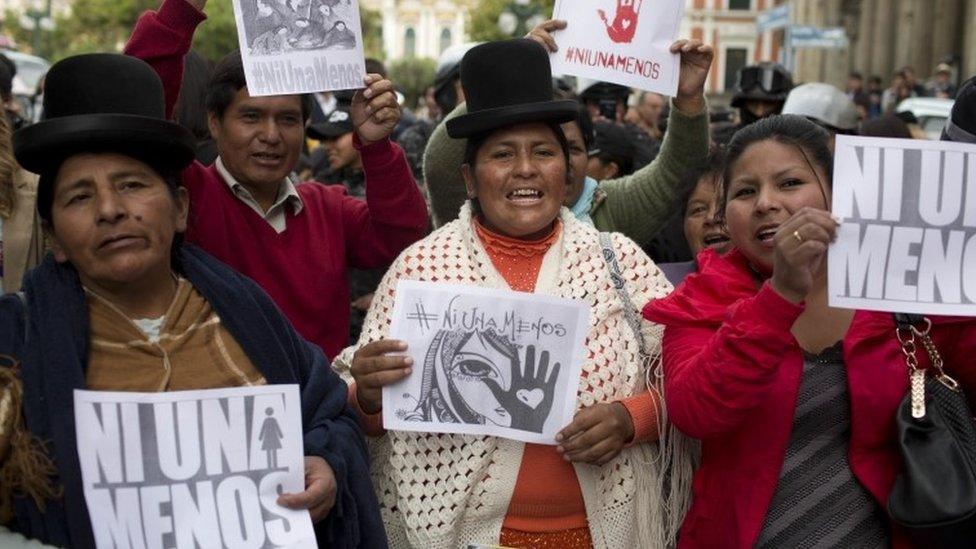
Women from the Aymara indigenous people took to the streets of the Bolivian capital, La Paz, to support the campaign.
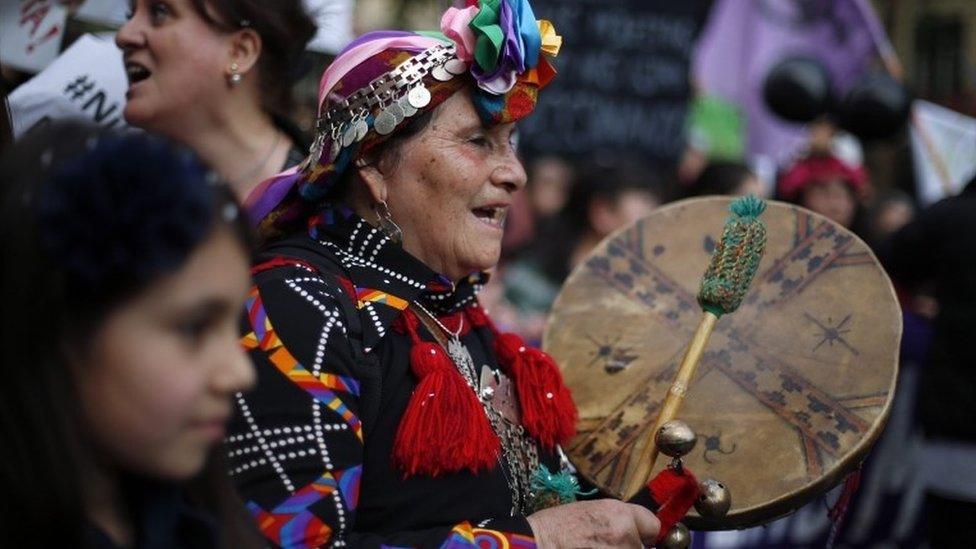
Some 25,000 people were said to have turned out in the Chilean capital, Santiago, and in other cities around the country.
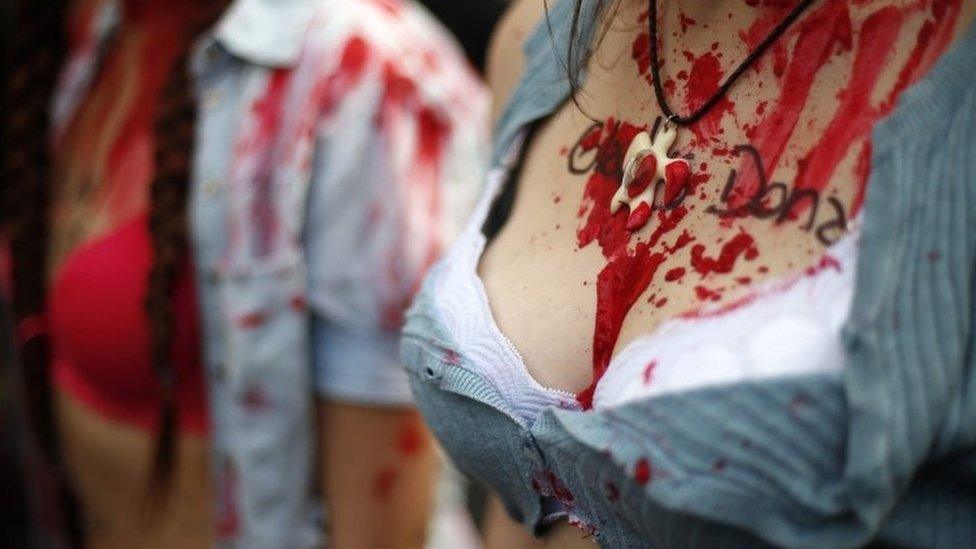
The brutality of the Lucia Perez case has shocked protesters and prosecutors.

Women gathered in Montevideo, Uruguay. Sixteen countries in Latin America have written laws on domestic violence, but critics say they are not being effectively implemented.
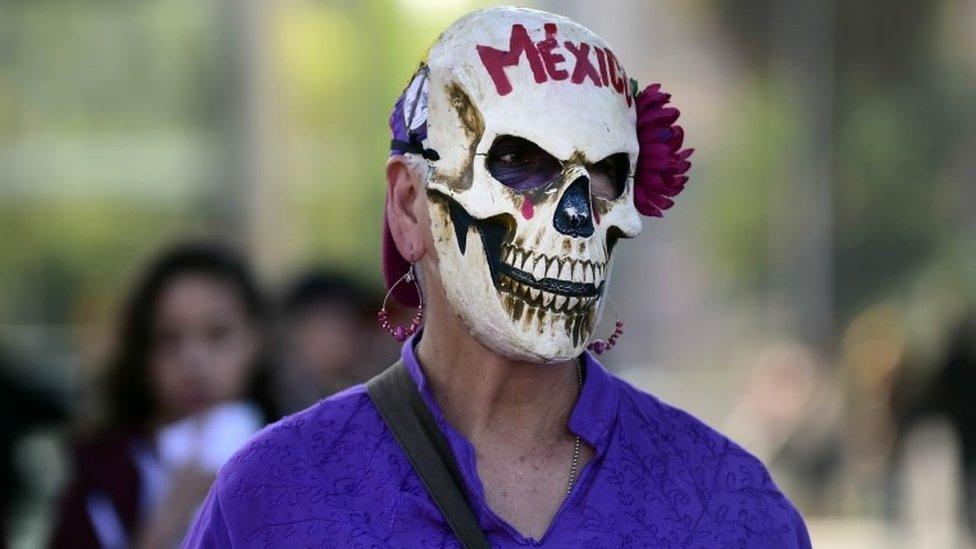
There was also a demonstration at Mexico City's Angel of Independence monument. Many sported purple and black handprints on their bodies to protest against gender violence.
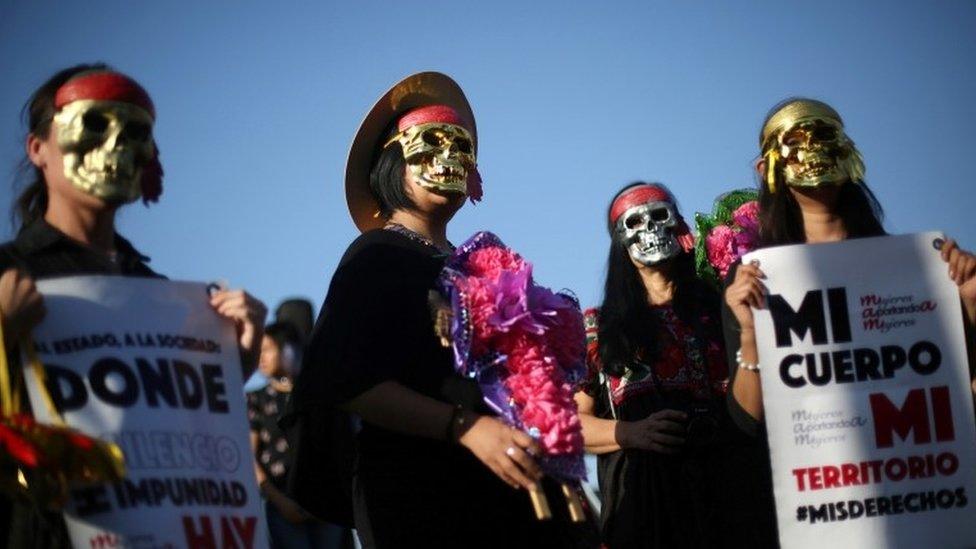
Activists took part in a march at the Revolucion monument, in Mexico City.

A protest was held in San Salvador, the capital of El Salvador. Many there were also calling for the decriminalisation of abortion.
- Published20 October 2016
